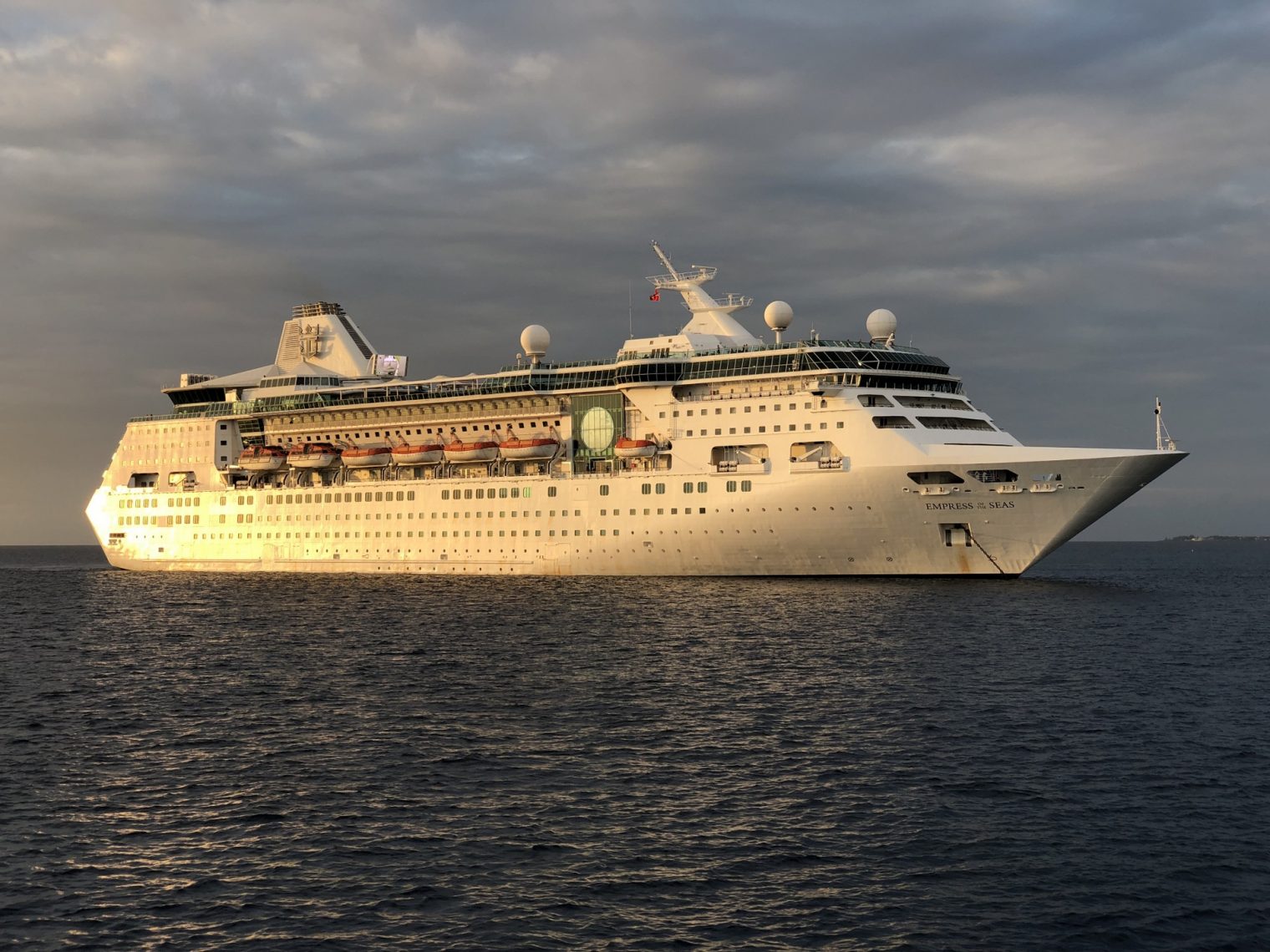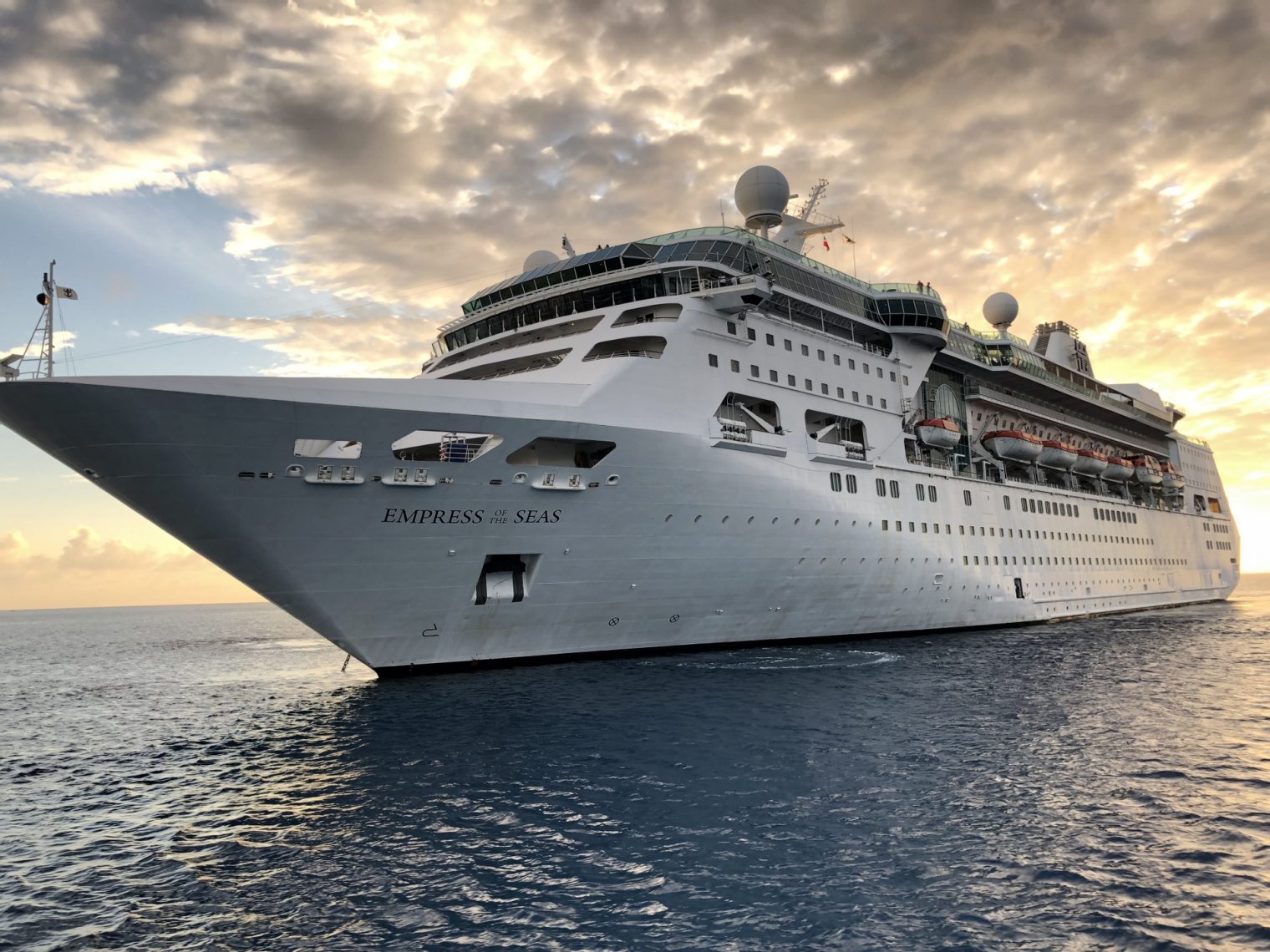The officers of Empress of the Seas were kind enough to host a Q&A session with passengers.
The life of an officer is 10 weeks on, 10 weeks off. The company is responsible for air transport to and from the officer’s home, wherever that happens to be on Planet Earth. There were no American officers on our ship and an American would be at a big disadvantage relative to a European. The typical European country doesn’t tax money earned elsewhere and, in any case, the officer can always choose to locate in a tax-free jurisdiction for his or her land home. The European officer with a family is not an attractive target for a divorce lawsuit due to the elimination of alimony (Germany, and similar) and/or the low caps on child support revenue ($2,000 to $8,000 per year per child, depending on country; see Real World Divorce). The land-based partner of a cruise ship officer cannot substantially live on the officer’s salary following a divorce.
(There is not a huge temptation for a heterosexual officer to stray while on board. All of the officers on our ship were men and the majority of crew members at all levels are male. There are apparently few women who are willing to be away from home for stretches of 6 months or more.)
Our ship is the smallest in the Royal Caribbean fleet. The captain explained his plan to catch up: “Every time we go into dry dock we will add 6 feet to the length. Over time we will grow into the largest ship.” (Empress of the Seas is being refitted in February 2019 in Freeport, Bahamas. Given that everything will need to be shipped in, I was shocked that it was more cost-effective to do this work in the Bahamas rather than in the U.S. There must be some spectacular inefficiencies in the American shipyards! In what other manufacturing or technical area is the Bahamas competitive?)
Why are all of the new ships big? The officers explained that the path to real profits starts with ships that hold at least 3000 passengers. That isn’t practical for these Cuba excursions due to the small piers that are available.
One thing that is not big on cruise ships is the draft. The captain explained that ocean liners, which are engineered with a deep draft to challenge big waves, can’t get into most of the Caribbean ports. The Queen Mary had a draft of 39′, the Queen Mary 2 is at 34′. Even the 6,000-passenger Oasis of the Seas draws only 31′ and the Empress of the Seas has a 24′ draft. There seems to be a mismatch, however, between how cruise ships are designed and how they are used. People are crossing the Atlantic and Pacific on these tall and shallow-drafted machines. We went through about 8 hours of dramatic (for a landlubber) rocking when sideways to what looked like a modest swell. Seasick bags were deployed in all of the elevator lobbies. This is despite the ship being equipped with stabilizers.


The shallow-draft top-heavy design seems like a rather poor choice for any ocean-going ship. Maybe the naval architects who work on cruise ships are all really obsessive fans of “The Poseidon Adventure?”
Somehow missed the European alimony nugget all these years. That explains why European couples are sometimes actually around each other.
“There is not a huge temptation for a heterosexual officer to stray while on board. All of the officers on our ship were men and the majority of crew members at all levels are male.”
What about female passengers, or are these mostly geriatric?
Most of these cruise ships are barely ships – they are more like floating hotels. And yet they rarely capsize unless they run aground. The biggest risks are getting sick from norovirus and fire.
> There must be some spectacular inefficiencies in the American shipyards!
I wonder if specialization and scheduling are also factors. Grand Bahama Shipyard, Ltd. (http://grandbahamashipyard.com/) seems to do quite a bit of cruise ship work, and I imagine it’s easier for Royal Caribbean to arrange a drydock availability there, and then build their sailing schedule around it, than to count on a U.S. shipyard that might have to change plans to accommodate the needs of the U.S. Navy, their largest customer.
There could also be tariff or tax reasons to do the work in the Bahamas: the shipyard’s website mentions that it’s part of a free zone, so perhaps the materials enter at a free or reduced duty. I realize the Bahamian ship’s registry is a flag of convenience, but it can’t hurt relations with the authorities to employ local labor.
Sorry but your Cruise O Nomics data is pretty inaccurate on many points especially for other cruise lines and other ships. Norwegian Cruise lines officers are mostly on contract for 6 to 9 months per year and then off for 3-6 months. Yes the officer corp is mostly male but the companies are adding females and a significant part of the regular staff is female. And life on board for staff is a lot of work but also about hook ups and partying. See below. And 10 of 17 boats in the NCL line are 2200 or so passengers and the company makes a nice profit.
http://mentalfloss.com/article/70240/14-behind-scenes-secrets-cruise-ship-workers
https://www.ncl.com/about/careers/shipboard-employment/faq
https://www.ncl.com/cruise-ship
https://www.google.com/search?q=norwegian+cruise+ship+staff+pictures&rlz=1C1CHBD_enUS689US689&tbm=isch&source=iu&ictx=1&fir=_BiUZqUUJGroAM%253A%252CRoflz5J13qzukM%252C_&usg=AI4_-kRtpTh-2YNG5pb-xnUigRLLaQLUnw&sa=X&ved=2ahUKEwjmnYey8cDfAhURJ3wKHRmIChoQ9QEwAHoECAAQBA#imgrc=_BiUZqUUJGroAM:
https://www.dailymail.co.uk/travel/travel_news/article-2969989/100-hour-working-weeks-sex-deck-REALLY-think-passengers-Confessions-cruise-ship-worker.html
Bill: https://www.investopedia.com/articles/budgeting-savings/090916/do-you-make-more-money-cruise-ship-captain-ccl-rcl.asp cites the same 10 week on/off schedule for Norwegian officers.
Jack: “dating” a guest is a firing offense.
“Cruise Ships” = floating hotels. Yes, shallower draft. Not good for crossing oceans so generally restricted to Med, Caribbean, Alaska run etc. – usually within a days sailing of a sheltered port. The only time they cross oceans are re-positioning cruises to move from a summer destination (Alaska) to winter (Caribbean).
“Ocean Liners” = cross oceans. Deeper draft vessels and more seaworthy to deal with real ocean weather.
Work in the Bahamas – that drydock does specialize in cruise ships but does work on tankers, container ships etc sometimes. It’s a big drydock. Very short turnaround to keep the ships running. Everybody works 24/7 for 1 or 2 weeks. US shipyard labor costs are insane so nobody goes there if they help it. Yes, also ineffiicent. There are few large drydocks in the US except the big yards that specialize in US Navy work.
Crews – the officers may be European but 90% of the crew will be from low labor cost countries like the Philippines or India.
– a working Naval Architect